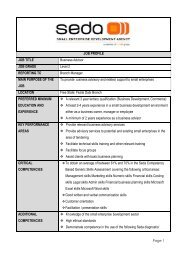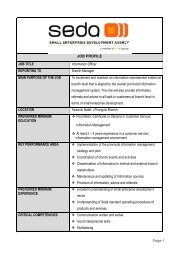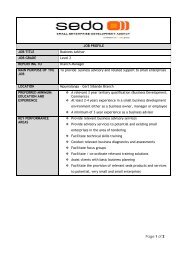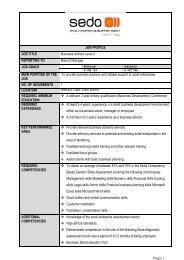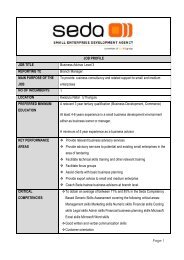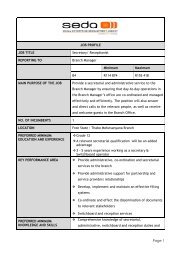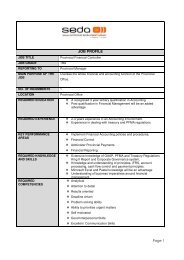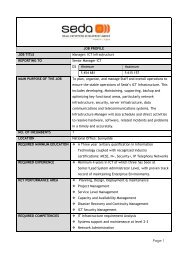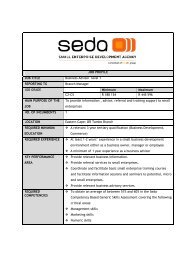Assessment of Cooperatives in the Poultry Industry - 2013.pdf - Seda
Assessment of Cooperatives in the Poultry Industry - 2013.pdf - Seda
Assessment of Cooperatives in the Poultry Industry - 2013.pdf - Seda
You also want an ePaper? Increase the reach of your titles
YUMPU automatically turns print PDFs into web optimized ePapers that Google loves.
Research Report: Address<strong>in</strong>g <strong>the</strong> Needs, Opportunities and Challenges <strong>of</strong> <strong>Cooperatives</strong><br />
and Collectively Owned Enterprises <strong>in</strong> <strong>the</strong> <strong>Poultry</strong> and Related Industries<br />
outcomes <strong>in</strong> place to receive assistance, market access and a holistic <strong>in</strong>terpretation<br />
<strong>of</strong> <strong>the</strong> bus<strong>in</strong>ess leadership and likelihood for success should be taken <strong>in</strong>to account.<br />
Creation <strong>of</strong> criteria relevant to each bus<strong>in</strong>ess type would be beneficial <strong>in</strong> order to<br />
assess success factors critical to that particular bus<strong>in</strong>ess type. These criteria should<br />
be evaluated by a service provider recognised by SAPA or by <strong>the</strong> DPFO.<br />
o<br />
Conditional equipment provision programme: In order to provide cooperatives with<br />
appropriate assistance, without creat<strong>in</strong>g a situation <strong>of</strong> greater dependency on<br />
support, it is suggested that a conditional equipment provision programme be<br />
implemented. A conditional equipment provision programme works on <strong>the</strong> premise<br />
that certa<strong>in</strong> criteria need to be met by a cooperative before <strong>the</strong> next phase <strong>of</strong><br />
equipment is provided. The case study (see <strong>in</strong>fo box) provides a similar example<br />
from Bangladesh.<br />
<br />
Redistribution <strong>of</strong> unutilised, under-utilised or poorly ma<strong>in</strong>ta<strong>in</strong>ed equipment:<br />
This recommendation <strong>in</strong>volves two parts. The first is locat<strong>in</strong>g unused or under-utilised<br />
equipment and farm<strong>in</strong>g grounds. The second <strong>in</strong>volves provid<strong>in</strong>g this equipment to cooperatives<br />
<strong>in</strong> a conditional equipment provision programme, as described above. This will ensure that<br />
cooperatives are provided with much needed equipment, but will also provide a mechanism<br />
through which SEDA can reclaim <strong>the</strong> equipment if <strong>the</strong> conditions <strong>of</strong> its provision are not met.<br />
<br />
Tra<strong>in</strong><strong>in</strong>g on proper use <strong>of</strong> equipment:<br />
It has been illustrated that many cooperatives do not make optimal use <strong>of</strong> <strong>the</strong> equipment that<br />
<strong>the</strong>y have at <strong>the</strong>ir disposal. Where equipment is provided to cooperatives, it is imperative that<br />
comprehensive and practical tra<strong>in</strong><strong>in</strong>g be provided from <strong>the</strong> outset. Additional tra<strong>in</strong><strong>in</strong>g should<br />
also be provided to cooperatives that already have equipment, but that are not reach<strong>in</strong>g <strong>the</strong> full<br />
potential this equipment provides <strong>the</strong>m.<br />
86 | P a g e U r b a n - E c o n : D e v e l o p m e n t E c o n o m i s t s



